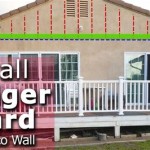Cost To Build A Natural Stone Patio In Singapore 2024
Constructing a natural stone patio in Singapore represents a significant investment in enhancing outdoor living spaces. It offers aesthetic appeal and durability, increasing the value and functionality of a property. However, understanding the costs involved in such a project is crucial for effective budgeting and planning. This article aims to provide a detailed breakdown of the factors influencing the cost of building a natural stone patio in Singapore during 2024.
Several elements contribute to the final price, including the type of stone selected, the size and complexity of the patio design, site preparation requirements, labor costs, and any additional features incorporated into the project. Fluctuations in material prices and the availability of skilled labor can also affect the overall expenditure. A comprehensive assessment of these factors is necessary to arrive at an accurate cost estimate.
Key Cost Factors: Stone Material Selection
The choice of natural stone is perhaps the most significant factor determining the overall cost of the patio. Different types of stone vary considerably in price, durability, and aesthetic qualities. Common options include granite, slate, sandstone, limestone, and travertine. Granite, known for its exceptional durability and resistance to weathering, tends to be one of the more expensive choices. Slate offers a unique, textured surface and good weather resistance, typically falling in the mid-range price bracket. Sandstone, with its warm, earthy tones, is a popular option but can be more susceptible to staining and weathering, requiring more maintenance. Limestone provides a classic look and is relatively porous, making it less suitable for areas exposed to heavy rainfall. Travertine features distinctive markings and a textured surface, but its porous nature necessitates sealing to prevent water damage.
The cost of natural stone is typically quoted per square meter or per piece, depending on the type and size. Granite, for example, can range from SGD 150 to SGD 300 per square meter, while sandstone might cost between SGD 80 and SGD 180 per square meter. Slate can be found in the SGD 120 to SGD 250 per square meter range, and limestone and travertine usually fall between SGD 100 and SGD 200 per square meter. These prices are indicative and can vary based on the specific supplier, the quality of the stone, and any custom cutting or shaping required. The source of the stone, whether locally sourced or imported, also plays a role in pricing, with imported stones generally being more expensive due to transportation costs and import duties.
Beyond the material cost itself, the thickness of the stone slabs or tiles affects both the durability and the price. Thicker stones are more resistant to cracking and chipping but are also heavier and more expensive to transport and install. A minimum thickness of 30mm is generally recommended for patio stones to ensure adequate structural integrity and longevity. Furthermore, specific finishes, such as honed, polished, or tumbled, can add to the cost of the stone. A polished finish offers a glossy appearance but can be slippery when wet, while a honed or tumbled finish provides better traction and a more rustic aesthetic.
Key Cost Factors: Patio Size, Design Complexity, and Site Preparation
The size of the patio is a direct determinant of the amount of material required and the labor hours involved, thereby influencing the overall cost. A larger patio naturally necessitates more stone, more underlayment, and more time for installation. The design complexity also significantly impacts the price. A simple, rectangular patio with straight edges is less expensive to construct than a patio with curves, intricate patterns, or multiple levels. Complex designs require more precise cutting and fitting of the stone, increasing labor costs and potentially generating more waste material.
Site preparation is another critical cost component that is often underestimated. Before laying the natural stone, the ground must be properly excavated, leveled, and compacted to provide a stable and even base. This may involve removing existing vegetation, soil, or concrete, and then adding and compacting layers of gravel and sand. The cost of site preparation can vary depending on the existing ground conditions. If the site is uneven, sloped, or contains significant obstacles, more extensive excavation and grading may be required, increasing the cost. Poorly prepared soil can lead to settling and cracking of the patio surface over time, so proper site preparation is essential for the long-term durability of the structure.
In some cases, drainage considerations may also add to the cost. If the site is prone to waterlogging or poor drainage, it may be necessary to install drainage pipes or a French drain system to channel water away from the patio. This will prevent water from pooling on the surface, which can cause the stone to deteriorate and create a safety hazard. The cost of drainage solutions can range from a few hundred to several thousand dollars, depending on the complexity of the system required.
Key Cost Factors: Labor Costs and Ancillary Expenses
Labor costs represent a substantial portion of the overall expense of building a natural stone patio. The cost of labor depends on the experience and skill of the contractor, the complexity of the project, and the duration of the work. In Singapore, experienced contractors typically charge between SGD 80 and SGD 150 per labor hour for patio installation. The total labor cost will depend on the size and complexity of the patio, as well as any additional features or challenges encountered during the installation process. It is essential to obtain multiple quotes from different contractors and carefully review their credentials and references before making a decision.
Ancillary expenses also contribute to the total cost of the project. These include the cost of materials such as mortar, grout, sealant, and underlayment. Mortar is used to bond the stone pieces together, while grout fills the joints between the stones. Sealant is applied to the surface of the stone to protect it from water damage and staining. Underlayment, typically a layer of geotextile fabric, is placed between the soil and the base layer to prevent weeds from growing up through the patio. The cost of these materials can range from a few hundred to several thousand dollars, depending on the size of the patio and the quality of the materials selected.
Additional features, such as steps, retaining walls, built-in seating, or outdoor lighting, will also add to the cost of the project. Steps may be necessary if the patio is located on a sloped area. Retaining walls may be required to support the patio or to create different levels. Built-in seating can provide a comfortable and attractive seating area. Outdoor lighting can enhance the ambiance of the patio and make it usable at night. The cost of these features can vary widely, depending on the design and materials used.
Finally, permits and inspections may be required by local authorities before and after the patio is constructed. The cost of permits and inspections can vary depending on the size and location of the patio. It is important to check with the local building department to determine what permits are required and to ensure that the patio is built in compliance with all applicable building codes.
Moreover, potential cost overruns should be anticipated, and a contingency fund of approximately 10-15% of the total estimated cost should be allocated to cover unforeseen expenses such as unexpected site conditions, material price increases, or design changes implemented during the construction process. This proactive approach helps to mitigate financial risks and ensures a smoother project completion.
In summary, the cost of building a natural stone patio in Singapore in 2024 is influenced by a multitude of factors, including the type and quantity of stone, the complexity of the design, site preparation needs, labor expenses, and additional features. A thorough assessment of these elements, coupled with meticulous planning and budget management, is paramount to achieving a successful and cost-effective patio construction project. By obtaining multiple quotes, carefully evaluating contractor credentials, and anticipating potential challenges, property owners can make informed decisions and create a beautiful and durable outdoor space that enhances the value and enjoyment of their homes.

Porcelain Paving Vs Natural Stone A Detailed Guide

How Much Does A Garden Wall Cost Homify

How Much Does It Really Cost To Build A Patio Homify

Average Retaining Wall Installation Cost Forbes Home

Flote Dark Grey Concrete Effect Porcelain Paving Tiles

Natural Stone Flooring Vs Ceramic Tile Singapore

How To Choose Flooring For Outdoor Areas Singapore

Natural Stone Flooring Vs Ceramic Tile Singapore

Is Interlock Er Than Concrete A Cost Comparison

Flote Beige Concrete Effect Porcelain Paving Tiles
See Also








